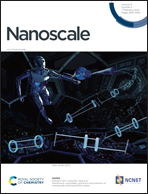An indirect way to achieve comprehensive performance improvement of resistive memory: when hafnium meets ITO in an electrode
Abstract
Emerging resistive random access memory has attracted extensive research enthusiasm. In this study, an indirect way to improve resistive random access memory (RRAM) comprehensive performance through electrode material re-design without intensive switching layer engineering is presented by adopting a hafnium-indium-tin-oxide composite. Working parameters of the device can be effectively improved: not only are low operation power consumption and high working stability achieved, but the memory window is significantly enlarged, accompanied by an automatic self-current-compliance function. The correlation between hafnium incorporation and performance improvements and the corresponding current conduction mechanisms have been thoroughly investigated to clarify the resistive switching behavior and to explain the oxygen absorption buffer effect. The hafnium atom, with large atomic radius, is surrounded by soft electron clouds and has high chemical activity to attract oxygen ions. It facilitates the accumulation of more oxygen ions around the interface of the top electrode and the resistive switching layer, leading to lower current and Schottky conduction. This study presents an important strategy for designing and developing electrode materials to improve the characteristics of RRAM and offers an indirect method to modify device working behaviors, also unveiling a promising prospect for its potential future application in low-power information storage and calculation technology.



 Please wait while we load your content...
Please wait while we load your content...